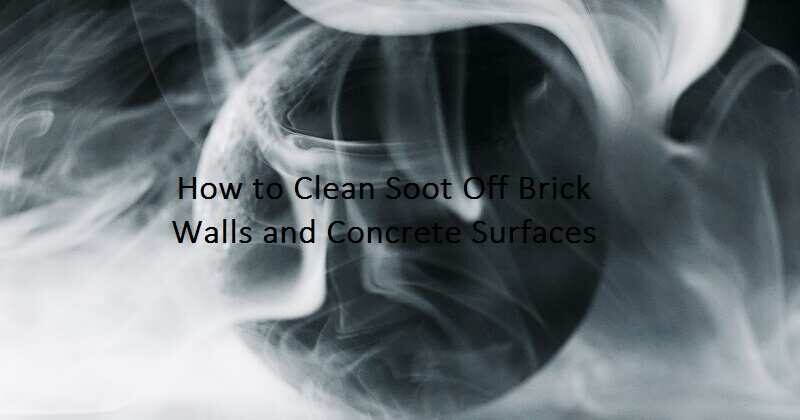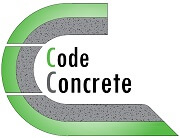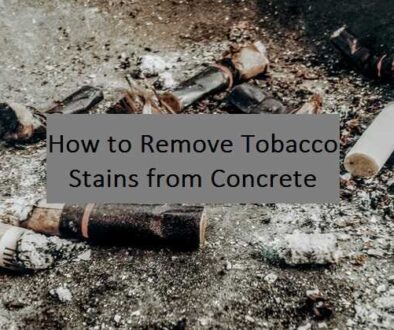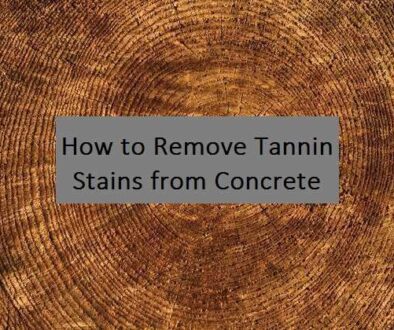How to Clean Soot Off Brick Walls and Concrete Surfaces

Last updated on September 16th, 2022
Smoke stains and soot on brick walls and concrete surfaces can be caused by fireplaces, chimneys, or fires, and can sometimes be hard to completely remove.
How to clean soot off brick walls and concrete surfaces: The ideal methods
In this article, we will address different methods for cleaning and removing smoke stains and soot from brick and concrete. These include the use of household products, homemade soot removers, and proprietary products, in different application techniques.
Method #1: How to clean soot off brick walls and concrete surfaces using different household products or homemade soot removers

This cleaning method is highly effective for most light to moderately stubborn smoke stains or soot on concrete and brick. In fact, it includes two main stages, depending on how stubborn the soot is.
Things you will need
- Safety gear.
- Power washer – for exterior applications.
- Plastic covers and masking tape – for protection of nearby objects.
- Absorptive piece of cloth or paper towels – for interior applications.
- Sugar soap / TSP / baking soda and laundry detergent / chlorine bleach.
- Hot water.
- Stiff bristle brush.
- Scouring powder.
- Scouring pad.
- Water.
Notes
- Trisodium Phosphate is also known as Sodium Orthophosphate, TSP, and Phosphate of Soda.
Appearance: White crystalline odorless powder.
Availability: It is available at the supermarkets.
Hazards: This compound is also corrosive to flesh. - Sugar Soap.
Appearance: White crystalline powder similar to sugar, or clear liquid.
Availability: It is available at the supermarkets and cleaning supply centers in the Commonwealth countries.
Hazards: It is corrosive to flesh. - Chlorine bleach is a liquid that consists of sodium hypochlorite, water, and other chemicals.
Appearance: Colorless or slightly yellowish.
Availability: It is available at the supermarkets and cleaning supply stores.
Hazards: This product is corrosive to flesh, and can react with other chemicals to produce a toxic gas. - Scouring powder or abrasive powder.
Appearance: Usually white powder, but can come in different colors.
Availability: It available at the supermarkets and cleaning supply stores.
Hazards: Can be corrosive to flesh.
Procedure
- Wear your protective gear.
- Cover or protect nearby objects using plastic covers and masking tape.
- Power wash the surface (exterior applications).
- Prepare one of the following mixtures:
- 2.5-3% solution of sugar soap and hot water.
- TSP and hot water as per the product’s dosage recommendation.
- Your homemade soot remover/cleaner paste: 2 parts laundry detergent, 4 parts baking soda, and 6 parts hot water.
- Chlorine bleach and water following the manufacturer’s instructions with dosage. (Note: do not apply this solution with a sprayer).
- Apply and spread the mixture using a stiff bristle brush.
- Let the mixture stand for 5-10 minutes, without allowing it to dry.
- Scrub using a stiff bristle brush.
- Rinse (exterior) or soak up the surface (interior).
- Scrub gently with scouring powder using a scouring pad.
- Rinse and flush, or power wash (exterior), or gently rinse, soak up, and wipe with cloth or paper towels (interior).
- Repeat if necessary.
Explanation
This method is ideal for the removal of most light to moderate and relatively new soot stains from brick and concrete surfaces. First, put on your safety gear. Then, if the area you are cleaning is outside, pressure wash it if the equipment is available. Next, use plastic covers and masking tapes to protect nearby objects.
Then, spread a solution of 2.5-3% sugar soap plus hot water, TSP plus hot water, homemade soot remover (2:4:6 parts of laundry detergent, baking soda, and hot water respectively), or a chlorine bleach solution diluted following the manufacturer’s instructions, using a stiff bristle, and allow it to stand for five to ten minutes to take its course. However, do not let the mixture dry; you can apply more of the solution if necessary. Next, scrub the smoke stains or soot using a bristle brush, and rinse the surface with clean water if applicable, or soak up using an absorptive piece of cloth or paper towels.
Afterwards, use a scouring pad to gently scrub the surface with scouring powder. And finally, either power wash or rinse and flush the surface for exterior applications, or lightly rinse, soak up, and wipe for interior applications.
Method #2: How to clean soot off brick walls and concrete surfaces using a poultice

For concentrated, deep, stubborn, and old smoke stains and soot, a poultice is the ideal removal method.
Things you will need
- Safety gear.
- Talc / cat litter / sawdust.
- Chlorine bleach.
- Stiff bristle brush.
- Clean water.
Notes
- Chlorine bleach is a liquid that consists of sodium hypochlorite, water, and other chemicals.
Appearance: Colorless or slightly yellowish.
Availability: It is available at the supermarkets and cleaning supply stores.
Hazards: This product is corrosive to flesh, and can react with other chemicals to produce a toxic gas.
Procedure
- Put on your safety gear.
- Mix chlorine bleach with talc powder to form a thick paste.
- Apply the paste to the surface and leave until dry.
- Scrape the remains using a bristle brush.
- Rinse and flush thoroughly with clean water.
Explanation
This is one of the most effective methods for the removal of the toughest smoke stains or soot. In general, you can apply this method if the other methods do no completely remove the stains. It mainly involves the application of a chlorine bleach poultice (a thick paste of chlorine bleach and talc powder) right on the surface. For vertical surfaces, it is important to mix the paste to the right consistency to properly stick and hold. Then, when the poultice dries, scrape off and scrub the remains, and rinse the surface thoroughly.
Method #3: How to clean soot off brick walls and concrete surfaces using proprietary soot removers

Soot cleaners and removers are available in the market in different compositions and working mechanisms. These mainly include products which can be painted and then peeled off, or products which can be sprayed or brushed, and then scrubbed to remove smoke stains and soot.
Things you will need
- Follow the manufacturer’s instructions.
Explanation
When using a proprietary soot remover product, it is important to properly read and follow the manufacturer’s recommendations on handling, safety, application, and cleaning. Also, you should test the product on a small inconspicuous area first to check its effect.
Frequently asked questions
How to remove soot from painted walls?
When dealing with soot or smoke stains on painted walls, and even on some other surfaces, it is important to perform dry cleaning first. In fact, dry cleaning is usually sufficient to remove most smoke stains and soot from walls caused by fire places. Mainly, dry cleaning includes the use of a vacuum cleaner, or even better and easier the use of a soot sponge.
A soot sponge, or a soot eraser, is a special type of sponge, made of volcanized natural rubber, which can easily lift soot and dust from various dry surfaces. In fact, it is cheap, easy to use, and generally leaves no residue on painted walls, which makes it one of the best tools to clean soot, smoke stains, and even cleaning after a fire damage. In addition, it is suitable for various surfaces including wallpaper, bare concrete, wood, metal, painted surfaces, fabrics, etc. All you have to do is wipe the dry surface with the dry sponge, just like you use an eraser to erase pencil marks. Besides, you can generally clean soot sponges with cold water or shave off the surface layer, however it is important to have the sponge completely dry before use.
Can I use vinegar to clean soot from bricks?
Vinegar can be highly effective in cleaning and removing smoke stains and soot from brick walls and concrete surfaces. However, vinegar is acidic, which means it can etch and damage the surface. Besides, even though applying a diluted vinegar solution for a short period of time is generally safe, it can cause damage on the long run, especially with frequent cleaning. In addition, cleaning with an acidic solution requires neutralizing the concrete surface afterwards.




